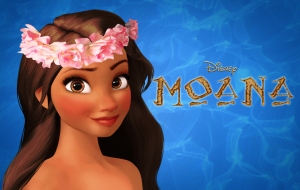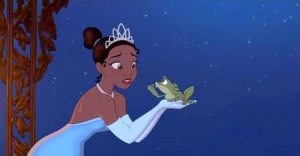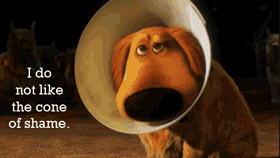I thoroughly enjoyed reading Kate Flynn’s article “Fat and the Land: Size Stereotyping in Pixar’s Up.” While I occasionally agreed with some of the points she made, I thought the majority of her arguments were purely ridiculous.
Sometimes when you read an article, you can tell when the author starts to make increasingly absurd statements or assumptions; in my experience this usually happens nearing the end of the text. However this time, on the very first page of her article, Flynn clarifies that she will “strategically” use the term “fat” to discuss Russell instead of “overweight” or “obese” because “‘fat’ shows potential as a neutral adjective, despite accumulated pejorative or shaming connotations.”
…..
Um, from what I’ve learned throughout the years, in the U.S. at least, “fat” is largely a negative adjective that is to be avoided in conversation. So basically, a red warning flag shot up in my mind right at the beginning of her work. I expected her arguments to get crazier and crazier, and I think it’s fair to say that I wasn’t let down.
Flynn effectively establishes a connection between body weight and incompetence. She states that the film basically treats fat as a source of comedy as well as a sign of “ill-suitedness” to the outdoors. She uses Russell’s failure to pitch his tent correctly and navigate through the wilderness without a GPS as testaments to the idea that his body weight is the reason for his inability to do things properly. Did she even think about the fact that maybe Russell is just a clumsy eight-year-old? He’s a kid, kids don’t do things perfectly, in fact, it’s expected for them to have difficulty with certain things that may seem like common sense to adults. That’s why they’re still training, learning, and growing. Also, by stating that Up treats fat as a source of comedy, isn’t Flynn essentially reducing Russell’s persona to merely “fat”? The movie focuses on Russell’s silly personality and his childish thoughts/actions as a source of comedy; I don’t recall a single scene, funny nor serious, paying obvious attention to Russell’s body weight. Personally, I didn’t see him as “the fat boy”, I saw Russell as a cute, funny kid. But Flynn goes on to compare Russell to a spherical BALLOON. It seems to me as if Flynn is shining much more light on Russell’s body shape, and in a negative light, if I might add, than Pixar ever portrays it in the film.
Flynn then moves on to discuss the connection between “fat” and the land. I do agree with her argument that Paradise Falls inspired a sense of national American identity. The 1930’s film the movie shows eight-year-old Carl watching at the beginning presents Venezuela as some far away wild land, just waiting to be discovered (Charles Muntz to the rescue). Even Ellie describes South America in awe as being “like America… but South.” The cinema portrayal of Paradise Falls is very “American”, boasting a typical transatlantic narrator’s voice, a typical waterfall scene of might (apparently similar to representations of Yosemite and Yellowstone Park), and of course who could forget the American explorer “uncovering” the wonders of the world. I don’t particularly take offense to this portrayal of Latin America, though, since that was to be expected in Carl’s 1930’s childhood world of strong American pride. The author starts to lose me, however, when she compares the land to “the racial other, the untamed woman (with waterfalls suggesting female genitalia), and the savage child.” No idea how any of those comparisons make sense… And then she talks about Paradise Falls as a religious place, where the storminess and mountainous landscape are evidence of God’s power and sources of inspiration and awe in Christians. This somehow makes sense to Flynn simply because Carl is apparently Puritan. I still don’t see the connection. I DO, however, understand when she draws the conclusion that Carl’s escape to “the lost world of Paradise Falls” is an escape from “the pettiness of existence”, from the annoying aspects of the modern world he feels a stranger to.
Lastly, Flynn brings her argument to a close with the topic that every critic of Disney ends with, whether it ties to their thesis or not — the Patriarchy. I honestly don’t even know how she fit this in to her paper at all. She suddenly criticizes Carl for “fulfilling his role of patriarch that fits his religious and national identity”, solely because he finally agrees to become Dug’s “master.” Seriously? Because he opens his heart and takes Dug in as family, Carl advances the Patriarchy? Dug is a dog. Dogs have owners. I don’t think anyone could get any more ridiculous than this…
Either way, no matter how crazy I think (or know) Kate Flynn is, I found her article amusing. It was interesting to see where she went with her arguments, almost like a guessing game…
































